Ovelias is a Greek Easter tradition where a whole lamb is roasted on the spit.
The word ovelias (pr. Oh-veh-LEE-as), comes from the ancient Greek word “ovelos” which used to be a wooden or steel rod, where pieces of meat were skewered on and slowly cooked.
Roasting on the Spit in Ancient Greece
Roasting on the spit, is an ancient tradition, when the Greeks would sacrifice animals to be favoured by their Gods!
A very popular place of sacrifice was on the Acropolis, when during very important events, such as the Panathinaea, they created a huge rotisserie, where they would roast up to 100 cows to honour Goddess Athena!
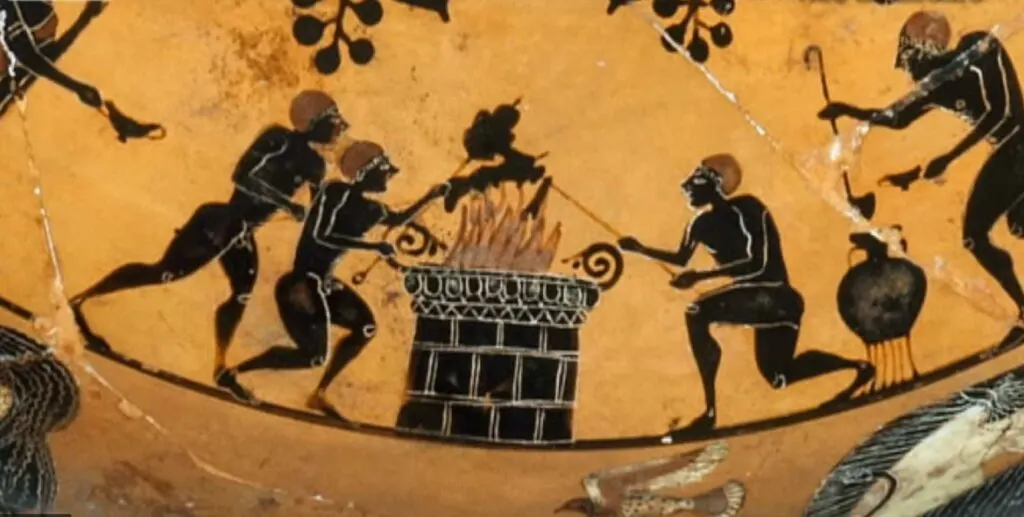
Nowadays, the word “ovelias” means a whole lamb cooked for Easter on the spit.
The preparation of the lamb and of its offal is usually my husband’s job.
It’s not an easy job to do and of course the women in the family help out as this is not a one man’s job to do this.
He used to be the only male member of the family who knew how to make ovelias and kokoretsi but as the years pass, he has trained other members of the family to do this.
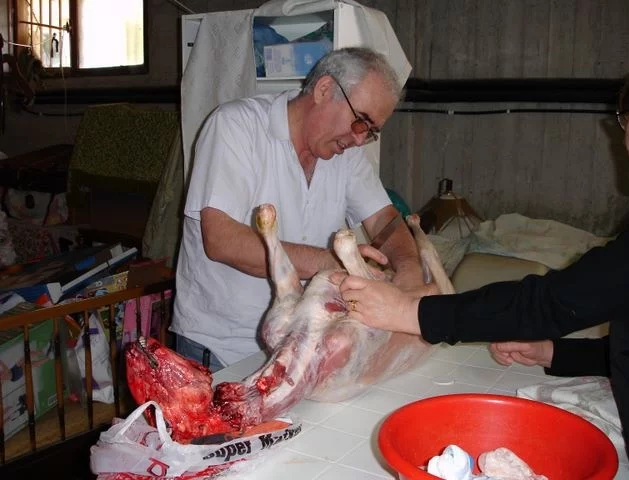
Easter is best celebrated in the countryside
During the Easter holidays half the population of Athens celebrate Easter at their villages or at their relatives’ villages.
Like the majority of the Athenians we drive away from this crazy city to relax and rejoin again with our relatives, who live in Sparta.
Sparta is about 2 – 3 hours drive away from Athens but some times, during the Easter holidays, it may take even four hours to reach there.
Greek families usually gather together and celebrate on such occasions and we end up being more than twenty persons on Easter Sunday.
Preparing the lamb to make ovelias
The preparation of the lamb starts from the previous day.
It is washed, seasoned and tied on the spit so that it is ready early in the morning to go on the spit.
It is then covered with napkins and it is left all night, vertically on the spit, to drain and absorb the flavours of the seasoning.
The same applies to making Kokoretsi, which needs even more time, as the thorough washing of the intestines takes a lot of time.
The intestines are turned inside out and carefully washed, then rubbed with salt and often soaked in vinegar or lemon juice and water.
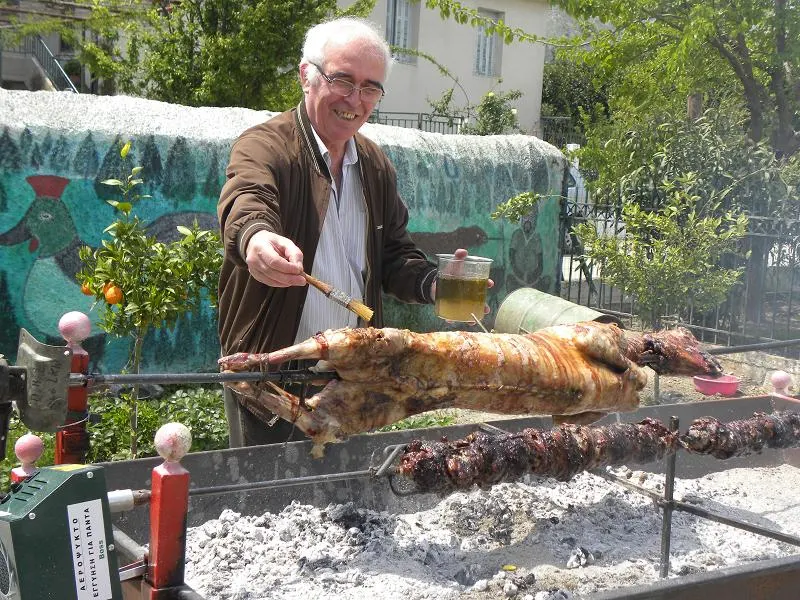
Preparing the fire and Roasting the lamb
On Sunday morning, my husband, together with my brother in law, get up early in the morning to prepare the fire.
My brother in law makes the fire by burning olive tree logs in a fire pit until they turn into hot charcoal.
The charcoal is then put in the roaster and the lamb starts to roast.
The lamb takes a lot of hours to cook, about 5 – 6 hours for a lamb around 10 – 12 kilos, but a lot of fun goes on while roasting.
Usually folklore music is playing loud and a lot of mezedes are served through the whole procedure.
The lamb is roasted together with a Kokoretsi and if there is leftover caulfat and lamb offal, we also make Tourkakia, a recipe we learnt in Sparta.
Some useful tips:
- If the charcoals are about to extinguish, remove the lamb and blow air on the charcoal by using a hair dryer to light up the fire again.
- When some of the fat melts on the charcoal the fire may light up, so just put it out by throwing some coarse sea salt on the fire.
- There should always be some backup wood burning to add to the roaster, in case it is needed.
- Depending on how many guests you expect for dinner, plan on approximately 500 grams / 1.10 lbs of lamb per person.
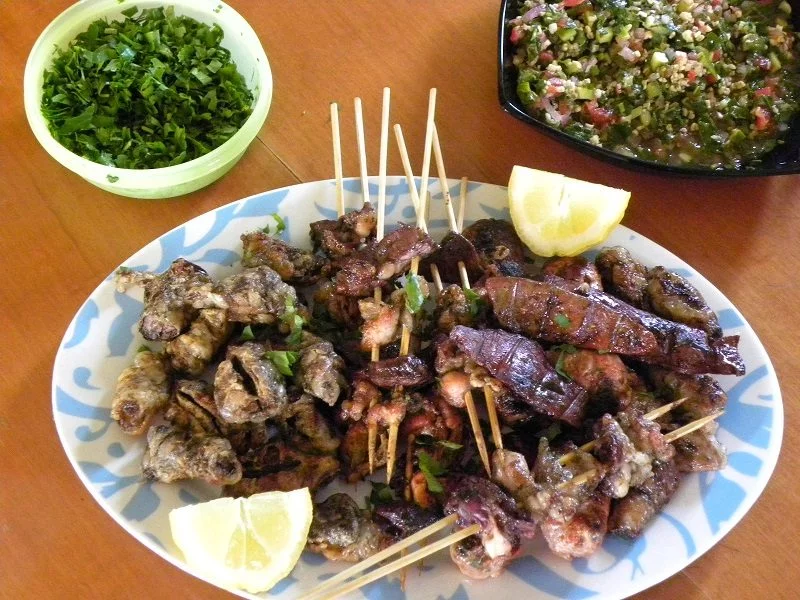
I have taught my sisters-in-law to make sheftalia, which although a Cypriot delicacy, everybody loves, so we always make some.
They never make it to the table as they are cooked before the lamb, so their lovely smell attracts everyone around the spit.
They are usually devoured during the roasting procedure, accompanied together with some ouzo. So does the kokoretsi, which is cut and eaten piece by piece directly from the spit.
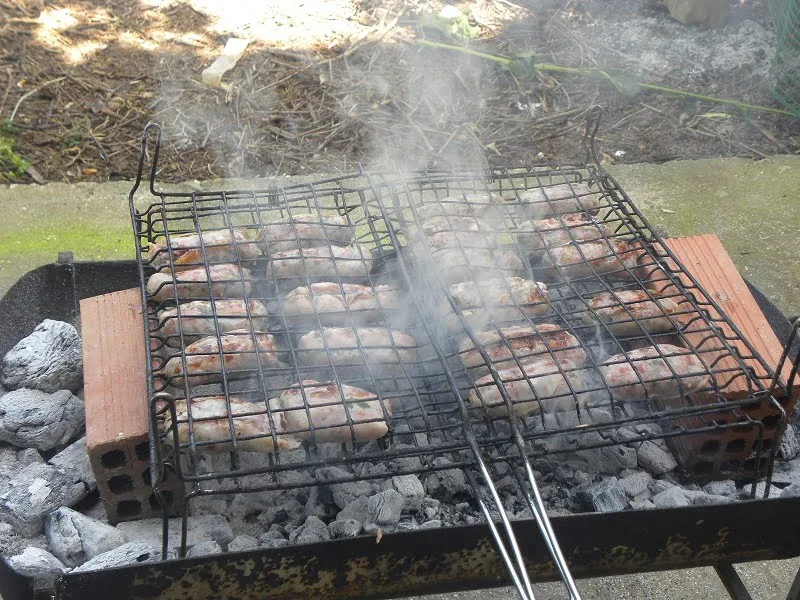
If you do not want to roast a whole lamb, the alternative solution is Kontosouvli (called souvla in Cyprus) or if you do not have a rotisserie, you can make Lamb Kleftiko or Lamb Bogana, which are equally delicious.
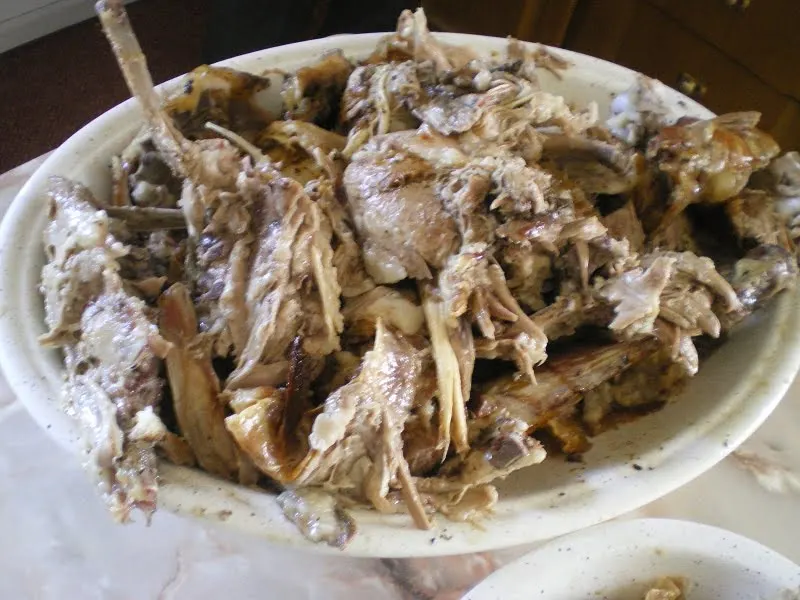
Scroll down to the end for the recipe.
Cypriot Souvla (kontosouvli)
In Cyprus, the tradition is quite different and instead of ovelias, they make Souvla, which in Greece, is called kontosouvli.
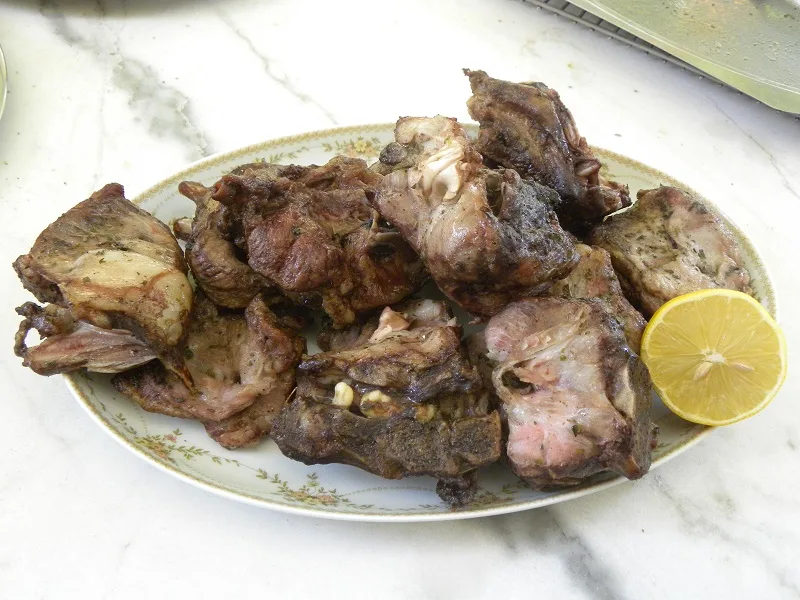
Souvla or kontosouvli, consists of large pieces of meat cooked on a long skewer over a charcoal barbecue. Think of a giant souvlaki but with bones in the meat!
The word souvla means skewer, and the Cypriots love making their souvla. It’s much easier to make than ovelias, so they don’t have to wait for Easter to roast one. Souvla is like “the traditional” Cypriot food and they don’t need an excuse to make one, as they make it on every occasion and opportunity!
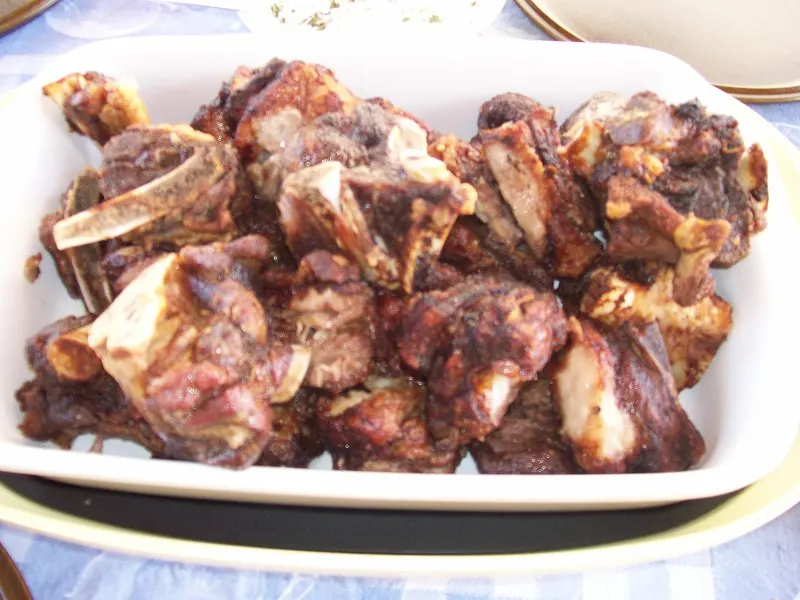
Everybody (well almost everybody who does not live in apartments) has a barbecue in their back yard, so it is very easy to have this delicious roasted meat whenever they like.
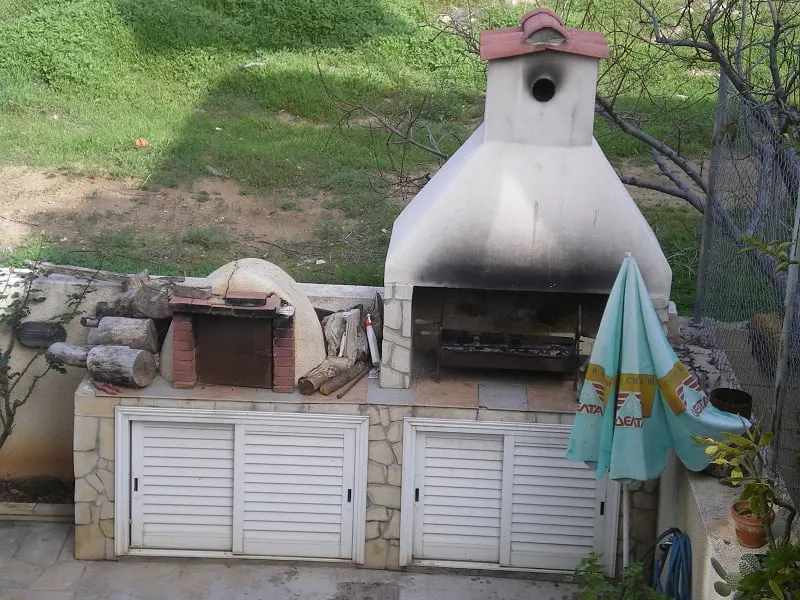
Whenever we cannot go to Sparta for the Easter holidays, we enjoy making souvla (kontosouvli) in Athens, on our small balcony.
TIPS AND TRICKS TO MAKE SOUVLA
- The best meat to make souvla is from the neck or the shoulder of lamb.
- The meat is cut into big chunks with the bone, washed and then generously salted. I
- t is then tightly skewered on a spit and is cooked over a charcoal barbecue.
- There are many variations of souvla, either marinating the meat in red wine, or adding more spices.
- Start the fire about an hour before cooking. This will depend on the type of charcoal used.
The recipe for souvla are well as many more Cypriot recipes, are included in my cookbook Mint, Cinnamon & Blossom Water, Flavours of Cyprus, Kopiaste! and in Volume 1 of my e-cookbook.
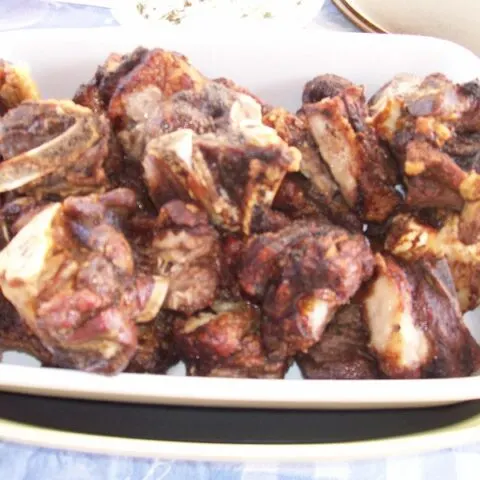
Souvla or Kontosouvli over Charcoal on a Cyprus Rotisserie BBQ
Souvla (in Greek kontosouvli) is a popular dish from Cyprus. It consists of large pieces of meat, usually lamb, cooked on a long skewer over a charcoal barbecue.
Ingredients
- 2 kilos (4.40 lbs) lamb, from the neck or the shoulder
Marinade ingredients:
- 1/2 cup extra virgin olive oil
- 1/4 cup lemon juice
- 1 tbsp coarse sea salt and freshly ground black pepper
- 1 tbsp oregano
Instructions
- Cut the meat into big chunks, the size of your fist (or 10 - 13 cm / 4 - 5 inches).
- Marinate the meat with all the ingredients for a few hours and skewer the meat on the spit, distributing the fatty parts among the meat.
- Light the charcoal and wait until it becomes white.
- Set the meat on the rotisserie over high heat and high speed. You do this so as to sear the outside of the meat and seal inside the juices and flavour.
- Then place it higher on the rotisserie and leave it turning until it is cooked, about 2 - 3 hours, depending on the age of the lamb, basting regularly with the marinade.
- Serve with lemon juice on top.
Nutrition Information
Yield 4Amount Per Serving Calories 300
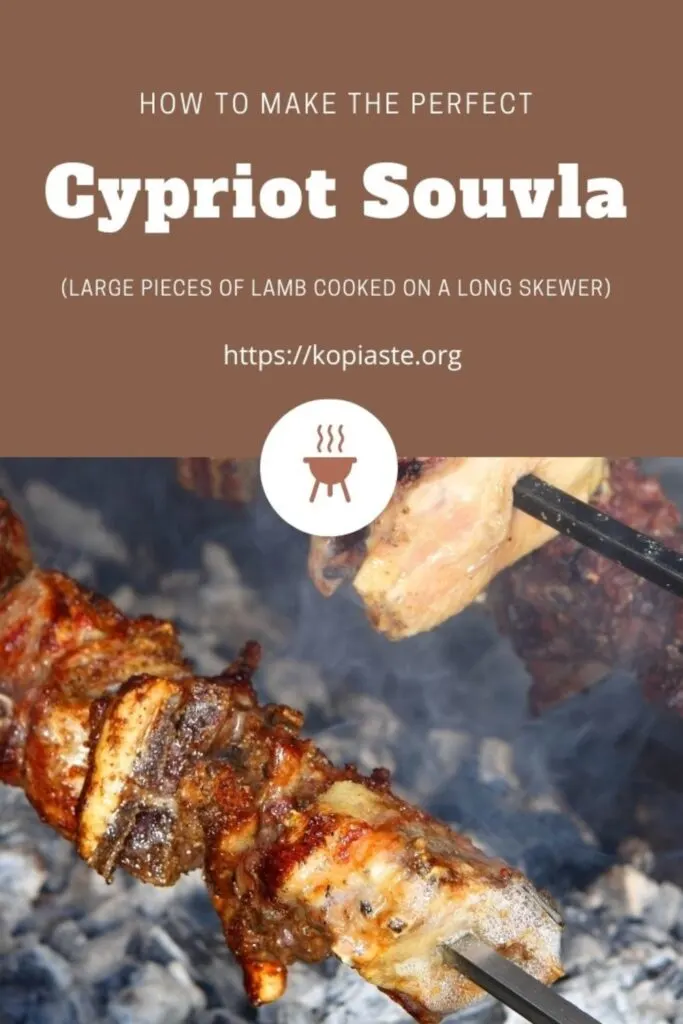
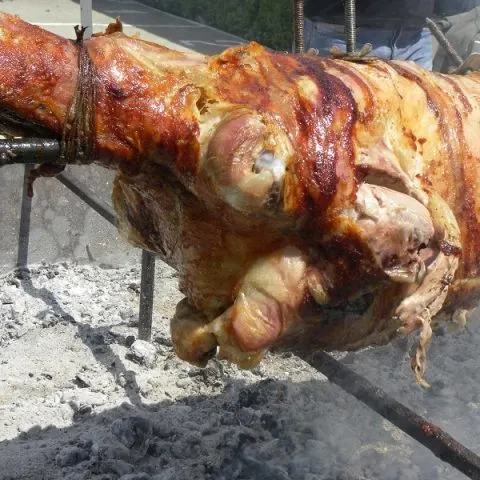
Ovelias - Easter Whole Lamb Roasted on the spit or Souvla
Ovelias is a Greek Easter tradition where a whole lamb is roasted on the spit
Ingredients
- 10 - 12 kilos lamb
Lamb Dry rub:
- 1/2 cup oregano
- 1/4 cup salt
- 1/8 cup black pepper
Ladolemono for basting:
- 1 cup olive oil
- ½ cup lemon juice
- 2 - 3 tablespoons oregano
Instructions
- The lamb is washed and is rubbed with a mixture of salt, pepper and oregano both inside and outside.Then the lamb is tied on a metal spit.
- The spit has to go in from the rear, through the body cavity and out through the head.The back legs are tied on the spit with a wire so do the front legs with the head.Also you must wire the lamb on the spit from the inside of the cavity around the spit and through to the back of the lamb, encasing the spit and the spinal cord so that it secured and it does not fall apart. The stomach cavity does not have to be sewn as it serves no purpose.
- The whole roasting will take about five or six hours depending on the size of the lamb and at the beginning it should be placed on the highest level and once it is on fire it should be rotated continuously, at the beginning quickly so that the lamb will cook well all way through and not only outside.
- Gradually you can move the lamb downwards. You must not forget to baste the lamb frequently with the ladolemono mixture.The basting should continue until the lamb is done and the skin is crisp.
Nutrition Information
Yield 20Amount Per Serving Calories 580
Greek Easter Recipes and more
Here are some of my Easter Recipes and a few ideas of what to do with your leftovers. I have also included some cakes for those celebrating.
Easter Whole Lamb Roasted on the Spit and Cypriot Souvla
Ovelias is a Greek Easter tradition where a whole lamb is roasted on the spit. The word ovelias pronounced Oh-veh-LI-as comes from the ancient Greek word “ovelos†which used to be a wooden or steel rod, where pieces of meat were skewered on and slowly cooked. Nowadays, the word “ovelias†means a whole lamb cooked for Easter on the spit.
Delicious Greek Stuffed Goat (or Lamb)
This delicious Greek stuffed Goat or Lamb is a traditional recipe filled with liver and rice, served during Easter or Christmas.
Magiritsa
Magiritsa is the Greek soup, made from lamb offal, lettuce and avgolemono sauce and the first meal served after the 40 days fasting of Lent.
Kokoretsi
Kokoretsi is a traditional Greek dish made mainly, but not only, during Easter, consisting mainly of seasoned pieces of lamb or goat offal (sweetbread, hearts, lungs, or kidneys), skewered on a spit and wrapped with lamb or goat caul fat and intestines and grilled together with the lamb.
Psito (Roasted Lamb or Goat meat)
Arni Psito pronounciation “ar-KNEE psee-TOH†is roasted meat cooked in the oven.  It could be made with lamb or goat and it is the perfect Sunday meal.
Goat or Lamb liver with whiskey and herbsÂ
It is not usual here in Greece when buying baby goat or lamb you have to buy the organs and sometimes the head, as well.Â
Sheftalia
Sheftali pl. Sheftalia are Cypriot oval shaped crépinettes, made with minced pork, herbs and spices which are then wrapped in caul fat and barbecued.
Tourkakia (grilled offal)
Tourkakia is one of the traditional delicacies we first ate in Sparta. Fragrant offal from goat or lamb wrapped in caul fat and grill over charcoal.
Bogana (Greek Roasted Leg of Lamb with Tomatoes)
Bogana is a traditional holiday dish from Argolida, with Leg of Lamb, roasted with whole baby potatoes and tomatoes. What makes it different and more delicious from other roasted lamb is the addition of ewe's and goat milk butter which gives its wonderful taste.
Roasted Lamb or Pork stuffed and wrapped in vine leaves
This Greek roasted pork is a twist to a classic dish made with lamb, which is perfect for any festive occasion.
Greek Keftedes (Meat Balls)
The Greek meatballs are made with stale breadcrumbs. Some prefer to soak the bread in water and others in milk. Usually ground beef is added and oregano and mint are added for flavour.
Patates Lemonates (Lemony Greek roasted Potatoes) my way
Patates Lemonates my way, are Greek Lemony Potatoes, which is a twist to the classic Greek side dish of roasted potatoes, with a sweet and sour taste. These Greek Lemon Potatoes are crispy from the outside and juicy from the inside with just the right amount of lemon flavors.
Flaounes (Cypriot Easter Cheese filled Bread)
Flaounes pr. flah-OU-ness (singular flaouna) is a traditional Cypriot Easter cheese bread made with an aromatic yeasted phyllo dough, filled with a special Cypriot cheese, called Pafitiko, made during the Easter period especially for flaounes, Â flavoured with Masticha (mastic resin), mahlepi (mahleb) and mint.
Salads and Appetizers
A few ideas to make salads and appetizers for Easter
How to make real Greek Tzatziki or Talatouri
Tzatziki is a traditional Greek appetizer, made with Greek strained yoghurt, cucumber, garlic, salt, vinegar and extra virgin olive oil, usually served as a meze dish.
Dakos Salad
Dakos is a Cretan salad made with barley rusk, finely chopped tomato, capers and olives, topped with Xinomyzithra (a local Cretan cheese).
Dakos Savoury Greek Cheesecake
A savoury cheesecake I made during Christmas, based on the Greek Cretan recipe for Dakos.
Cypriot pita bread
Cypriot pitta bread are much different to the Greek pitas. They are flatbread like the other pita but are different in shape and in taste.
How to make Greek Pita Chips
These baked Greek pita chips make a lovely accompaniment to any dip or spread or served with a topping instead of making bruschetta!
Taramosalata
Taramosalata, is a wonderful Greek dip made with red or white fish roe of the cod or carp fish, served as an appetizer.
Tyrokafteri
Tyrokafteri, which is a Greek cheese dip, is made with roasted hot green peppers and feta. It is perfect as an appetizer on bread, pita chips or crackers.
Melitzanosalata or Eggplant salad
Melitzanosalata is a traditional Greek dip / appetizer made with eggplants which have been charred over charcoal or over an open flame, until the skin blisters, to get a smoky taste.  The skin is then removed, as well as the seeds, if any, and the eggplant is either finely chopped, mashed with a fork or pureed.
Crispy Phyllo Wrapped Feta
Crispy Phyllo wrapped feta is a delicious Greek appetizer made with feta wrapped in phyllo, fried and served as it is for a vegetarian appetizer or with honey and sesame seeds.
Tyropitari
Tyropitari pronounced Tee-rho-pee-TAH-ree, is a homemade Greek pastry filled with feta cheese and deep fried, which is served as an appetizer.
Greek-style Feta and Graviera Quiche with Bacon
Quiche, pronounced keesh, is a French, savoury open tart consisting of pastry crust, filled with eggs, milk or cream, and cheese, meat, seafood or vegetables.  Discover a new twist I made to this French favourite with Greek cheeses.
Tyropitakia (Cheese Triangles with Feta)
These tasty cheese-filled triangles are finger foods which can be served as appetizers, mezedes, side dishes, and snacks.
Easter Leftovers
A few ideas to make with your Easter Leftovers
Classic Deviled Eggs
Deviled eggs are a classic recipe and perfect to make good use of your leftover Easter eggs, to serve as an appetizer for parties and other gatherings.
Spring Lettuce and Egg Salad
Have leftover Easter eggs? Make this amazing salad with all the wonderful produce spring brings!
Greek Potato Salad with Mayonnaise
An easy and delicious Greek Potato salad made with mayonnaise, extra virgin olive oil and Greek yoghurt. It is perfect to accompany you meat dishes, served as a light dinner or even add it in your sandwiches.
Arniopita (Greek Lamb Pie)
Arniopita is a Greek Lamb Pie I made with yeasted dough, filled with leftover roasted lamb with potatoes, corn and thickened with a bechamel sauce.
Lamb Exohiko
Lamb Exohiko (country style) is a dish which comes from Roumeli, usually made using leftover lamb, vegetables and cheese, wrapped in a parcel and baked. It can be wrapped in parchment paper or phyllo.
Deconstructed and Healthier Braided Piroskis (Pirozhkis)
Pirozhki or piroshki or Piroski (as we call them in Greece, with stress on the last syllable), are made from yeast dough and filled with a variety of fillings and are great for snacks, appetizers, lunch or dinner.
Cottage Pie with Leftover lamb or ground Veal
Cottage Pie or Shepherd's Pie is a delicious English traditional pie, the first made with ground beef or other ground meats, whereas the second is made with ground lamb,
Lamb Pie and Lamb Gyros with Leftovers
Everybody loves a good lamb pie wrapped in puff pastry and this one is made with leftover lamb on the spit, a few days after Easter with the addition of leeks, spring onions, dill and graviera cheese, which is just delicious!
Traditional Greek desserts
Here are a few of the most popular Greek desserts
Galaktoboureko (Greek semolina Pudding wrapped in phyllo)
Galaktoboureko is a traditional Greek dessert made with a custard in a crispy phyllo pastry shell.
No-Bake Chocolate Hazelnut Biscuit Fridge Cake
This No-Bake Chocolate Hazelnut Biscuit Fridge Cake is easy to make and delicious. It is made using three layers of Petit Beurre biscuits, dark chocolate pastry cream, chocolate ganache and hazelnuts.
All you need to know about Greek Baklavas
Traditional Greek Baklavas (pronounced Mpah-klah-VHASS), is a delicious traditional dessert made of layers of crispy golden brown phyllo, filled with chopped nuts and bathed into scented honey syrup!
Lemon Ekmek Kataifi
A twist to the classic Ekmek Kataifi, with lemon curd. This Lemon Ekmek is smooth, thick and creamy, with a light lemon flavour in the pastry cream.
Kantaifi
Kantaifi (pronounced Ka-ta-ee-fi), is a pastry made with a special form of shredded phyllo dough which looks like angel pasta. It is used to make a delicious dessert called kantaifi, which encloses a filling with chopped almonds or walnuts (and sometimes other nuts), scented with rose water, ground cloves and cinnamon. When baked it is then drenched in an aromatic syrup.
Easter Desserts
Tsourekia and Koulourakia are the most traditional Greek Orthodox Easter desserts, made especially for this occasion.
Tsoureki with 6 cords
Tsoureki is a sweet brioch type of bread made during Easter. In the video you can watch a new technique of braiding tsoureki with six cords.
Tsoureki Flower filled with Praline
Tsoureki flower is a type of Greek style sweet brioche bread made during Easter but shaped into a flower. Â
Tsourekia with Chestnut filling
Tsoureki, plural Tsourekia, (pronounced TSOU-rhe-kee), is a slightly sweet Greek bread, similar to brioche, which is braided and made throughout the year. It is also part of our Easter and Christmas traditions.
Braided Savory Cheese Tsoureki
This braided Savory cheese tsoureki is made with tsoureki dough and a filling made with cheese, eggs and mint.
Tsoureki Pudding and Other Bread Puddings
Bread Pudding is an old fashioned dessert which is made in many countries which had an English influence.
Koulourakia Paschalina (Greek Easter Cookies)
Koulourakia Paschalina are Greek Easter Traditional Cookies, which are crispy outside and soft inside, full of orange flavour.
Traditional Lambriatika Koulourakia (Greek Easter Cookies)
Traditional Lambriatika Koulourakia (also called Paschalina Koulourakia), are Greek Easter butter cookies, which are traditionally made only during Easter and have a distinct flavour as baking ammonia is used as the leavening agent.
Cakes for Special Occasions
Here are some special cakes to celebrate your name day!
Twix Banoffee Cheesecake with Greek Yoghurt and Caramelized Bananas
This Twix Banoffee Cheesecake is made from fresh and caramelized bananas, cream and toffee (made from boiled condensed milk, or dulce de leche), combined on a buttery biscuit base and decorated with Twix Chocolates and dulce de leche sauce.
Toblerone Cake with Cream Cheese and White Chocolate
This amazing Toblerone Cake was made with a sponge cake and the filling and decorations are are made with cream cheese and rich Toblerone frosting.
Strawberry Cake with White Chocolate Leafs and Cream Cheese frosting
Looking for a different Strawberry Cake? Â This tutorial which teach you to make a vanilla sponge made from scratch decorated with whipped cream and white chocolate leafs? Â How does that sound?
Luscious Bounty Cake
Bountry Cake is a luscious cake which mimics the chocolate bars as it is filled with coconut cream and topped with chocolate!
Strawberry Chocolate Cake with 3 Greek Ingredients
An impressive strawberry chocolate coffee celebration cake for any occasion. It is made with a simple sponge, filled with chocolate mousse and cooked strawberries, topped with fluffy buttercream frosting and fresh strawberries
Strawberry Red Velvet Cake
An amazing red velvet cake sandwiched with strawberry cream cheese filling and topped with cream cheese frosting.
Ferrero Rocher Chocolate Cake
Ferrero Rocher is a cake made with chocolate sponge, filled with a cream cheese chocolate ferrero rocher filling and topped with chocolate ganache.
Strawberry Bavarian Cream Cake
This Strawberry Bavarian Cream Cake is made with 4 layers sponge Cake, filled with whipped cream, cream cheese and strawberry coulis, topped with a strawberry white chocolate frosting.
Tourta Fraoulita (Strawberry Cake)
Tourta Fraoulita is a 100% homemade Strawberry Cake filled with strawberry yoghurt mousse and topped with strawberry white chocolate frosting, which I made from scratch to celebrate my husband's name day.
Sockerkaka Pomegranate Sponge Cake
Sockerkaka, is an easy and delicious sponge cake that comes from Sweden. It can be eaten as it is or made into a birthday cake.
Salted Caramel Lemon Poppy Pound Cake
A moist, buttery and subtly flavoured lemon sponge, with pastry cream between the layers and topped with salted caramel and whipped cream. Â
Black Forest Cherry and Gooseberry Cake
Blackforest, Foret Noir or Schwarzwälder Kirschtorte, as is the original name (literally “Black Forest cherry torteâ€) is one of my favourite cakes.
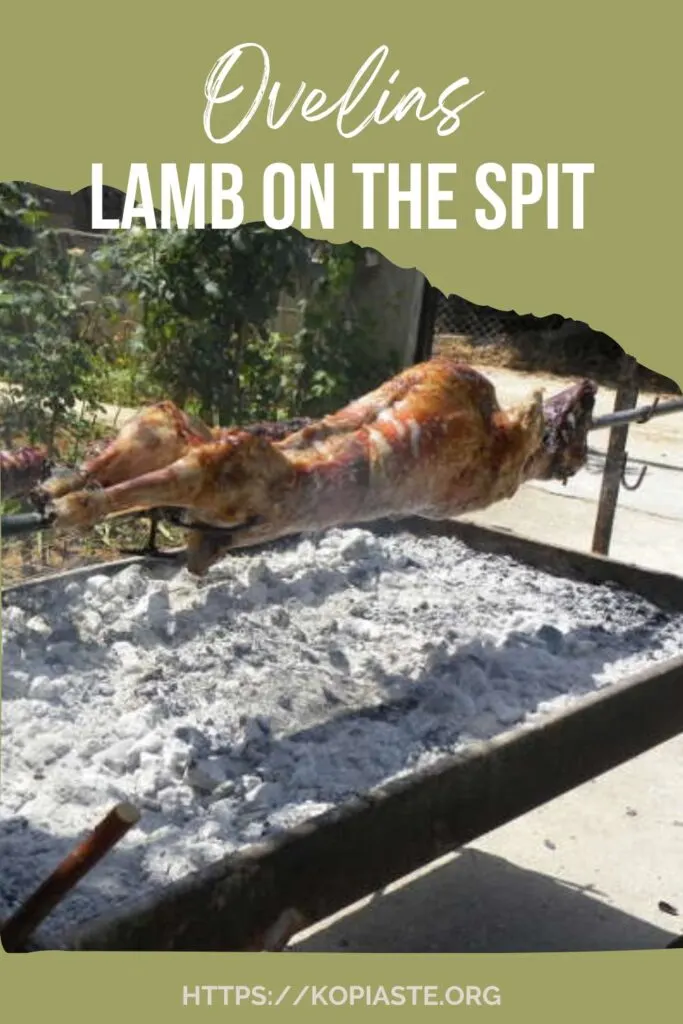
Kopiaste and Kali Orexi,
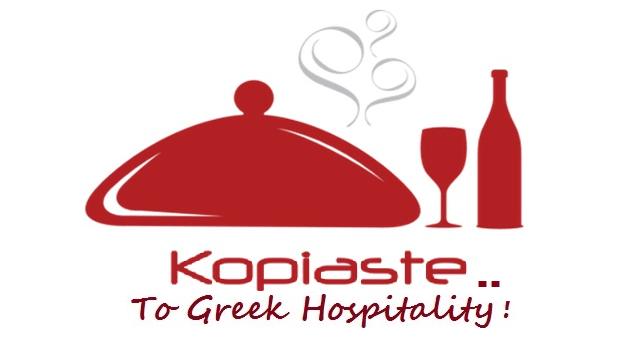
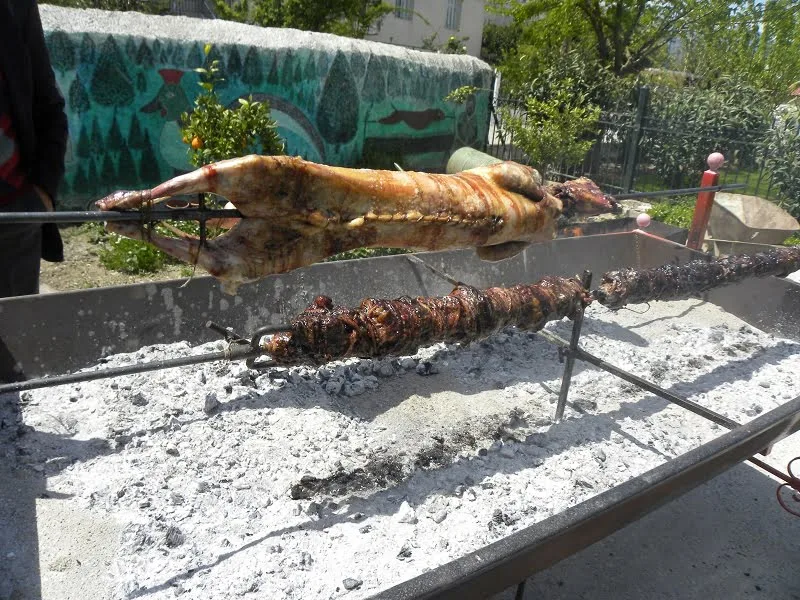
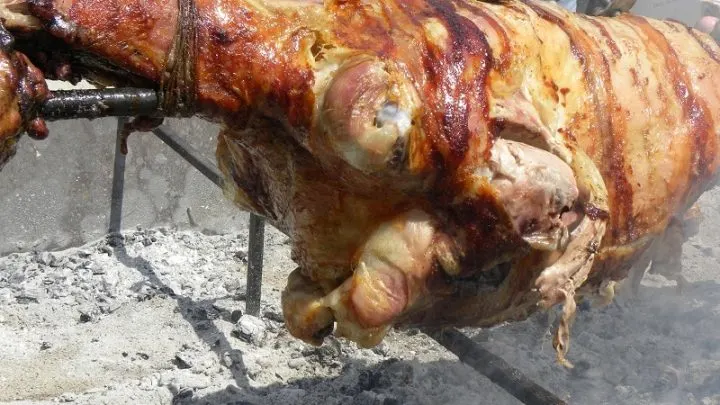
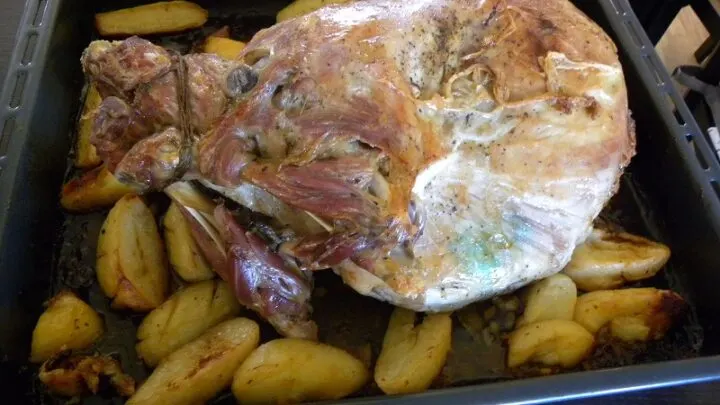
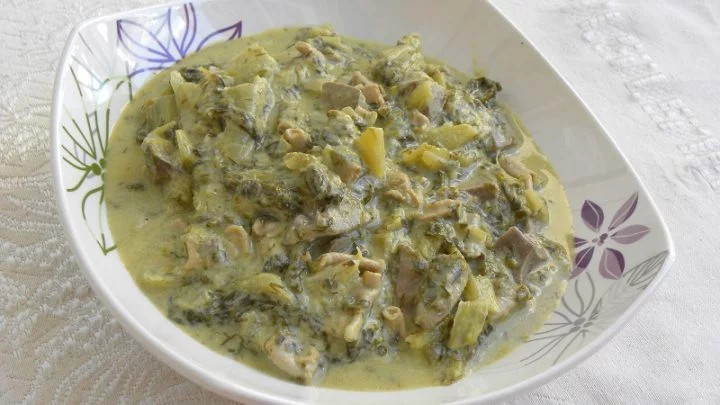
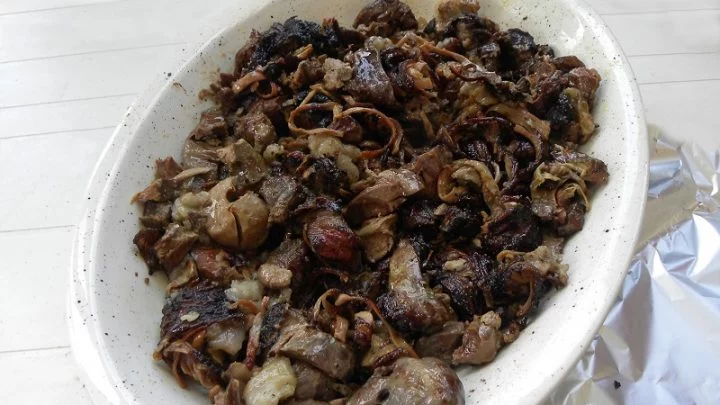
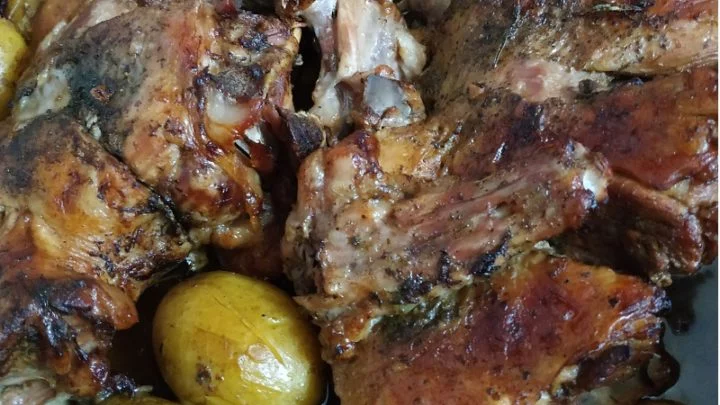
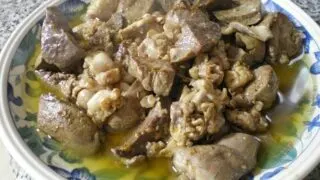
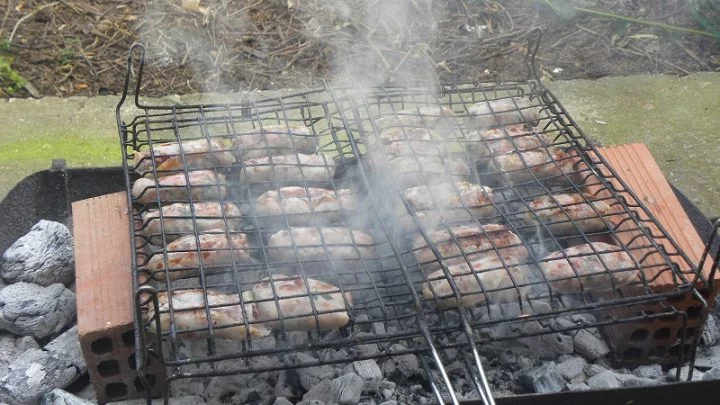
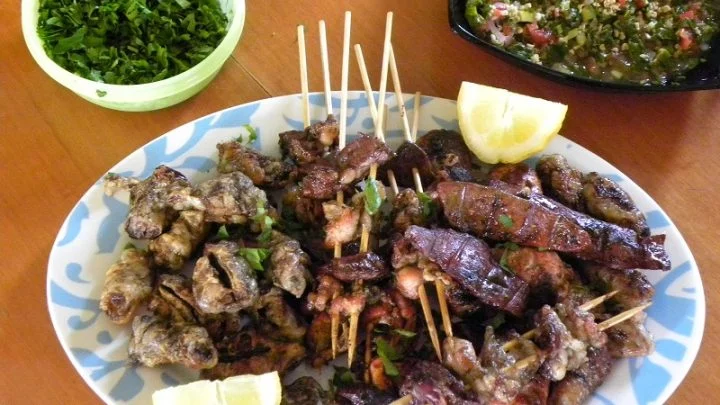
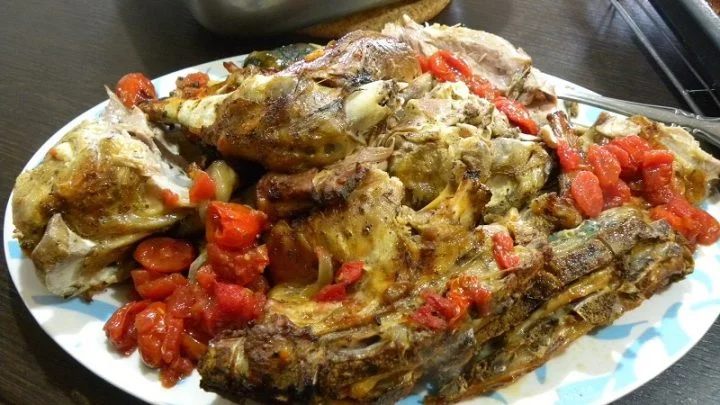
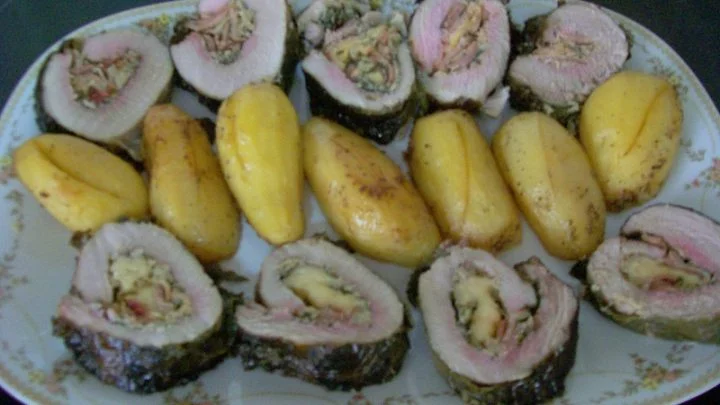
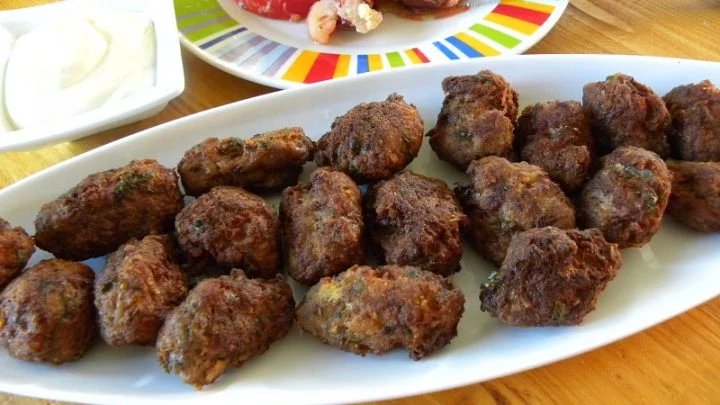
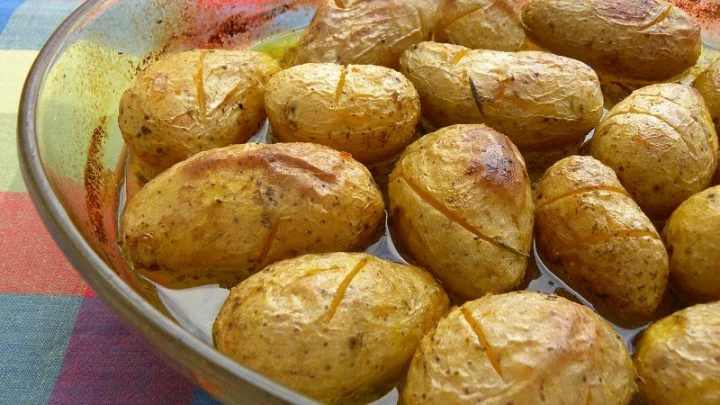
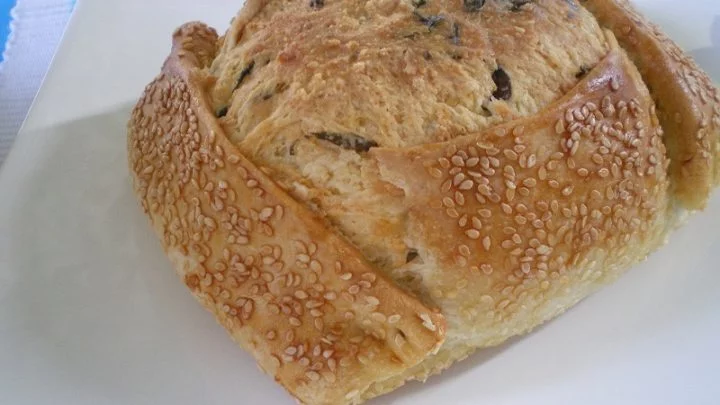
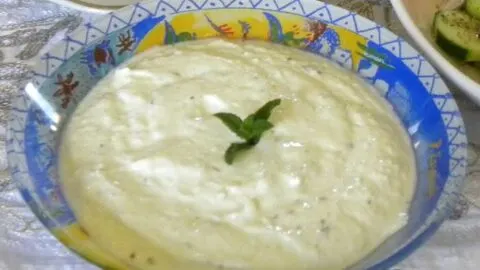
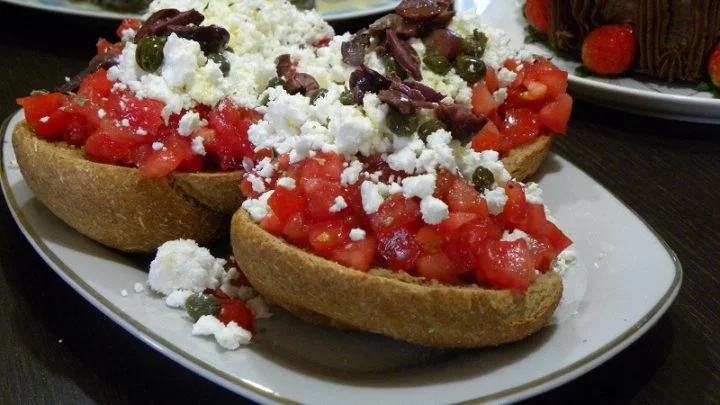
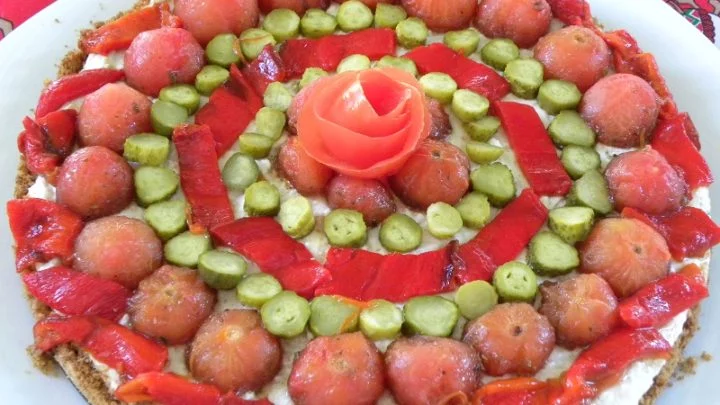
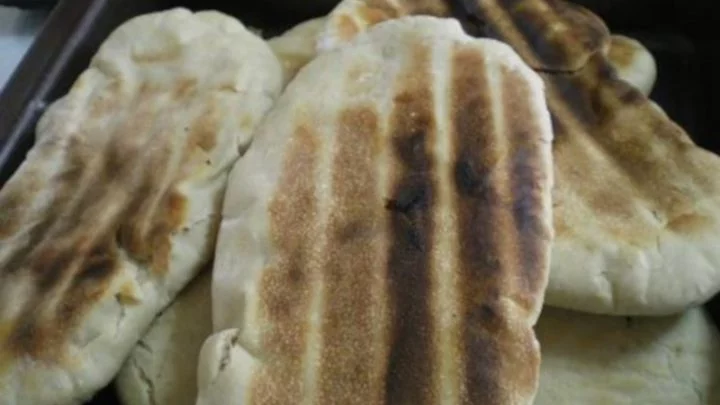
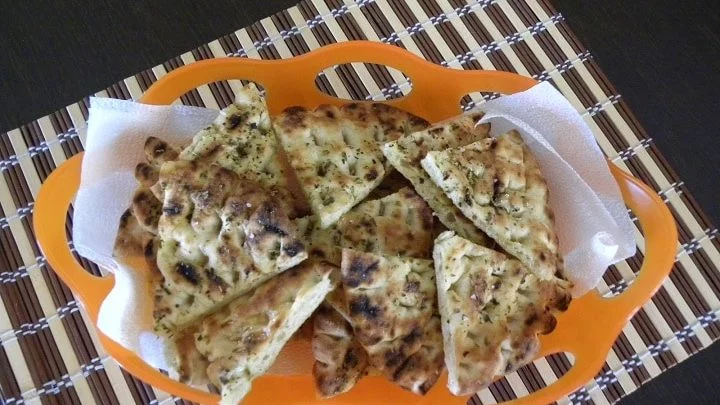
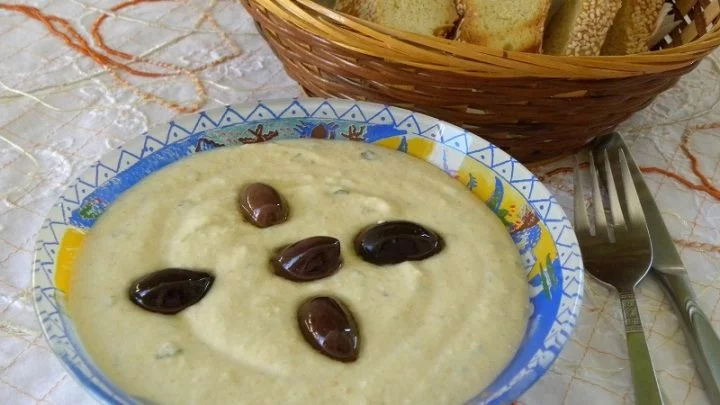
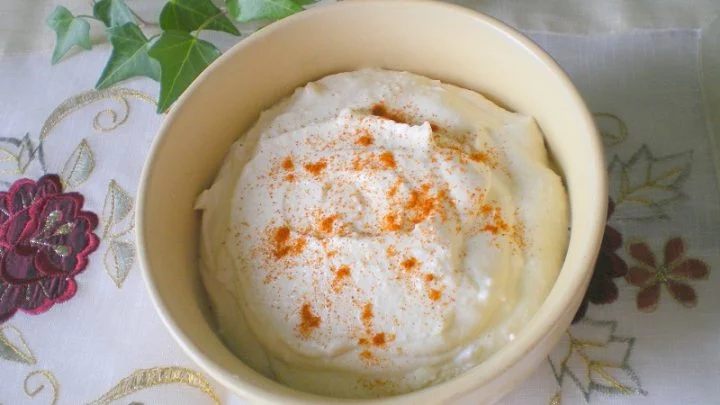
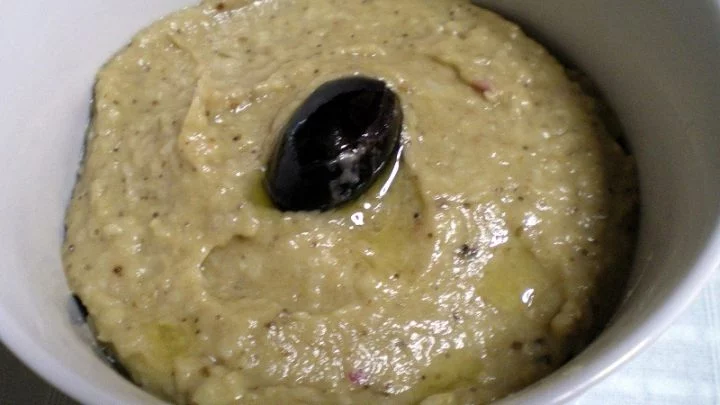
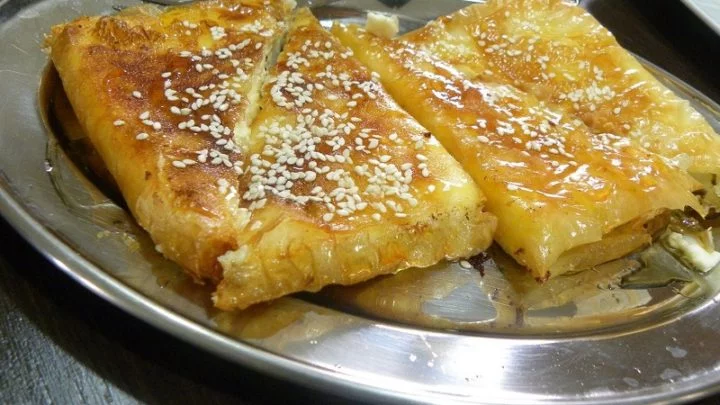
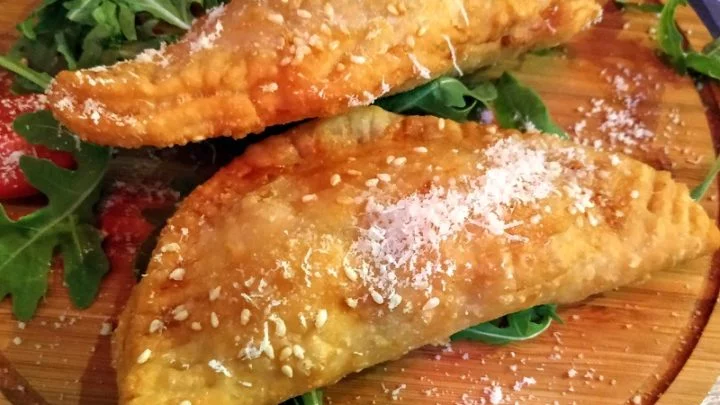
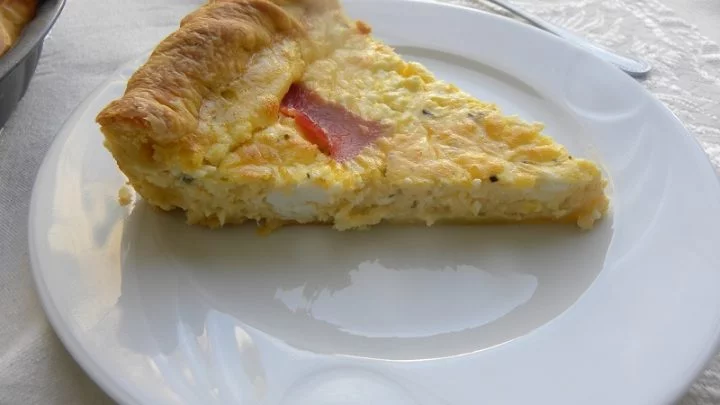

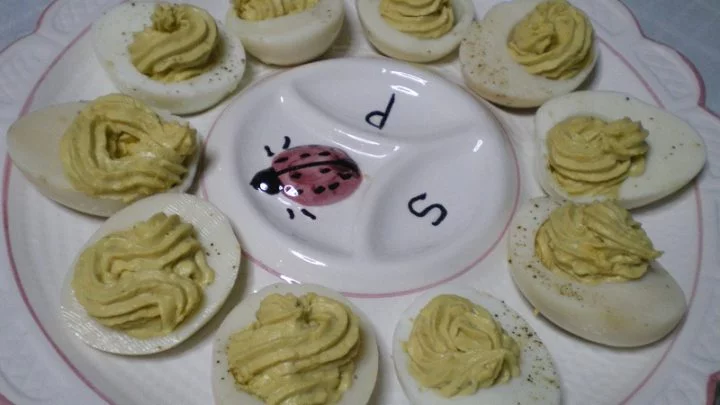
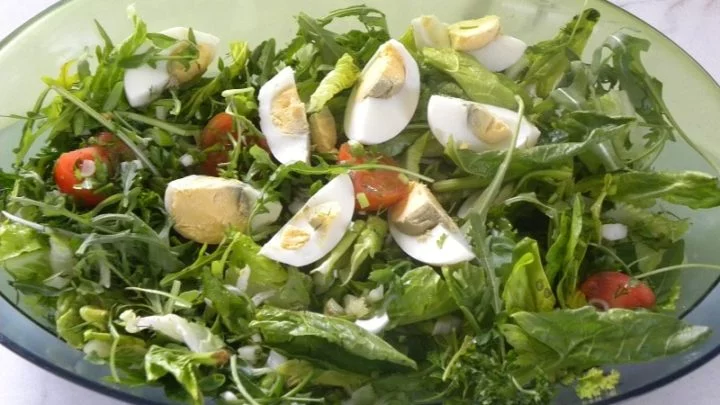
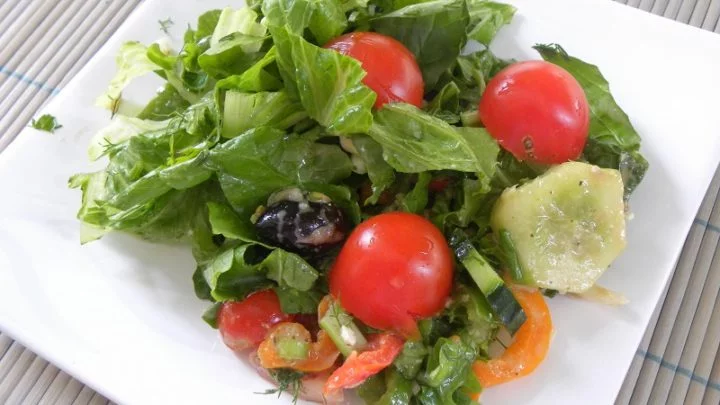
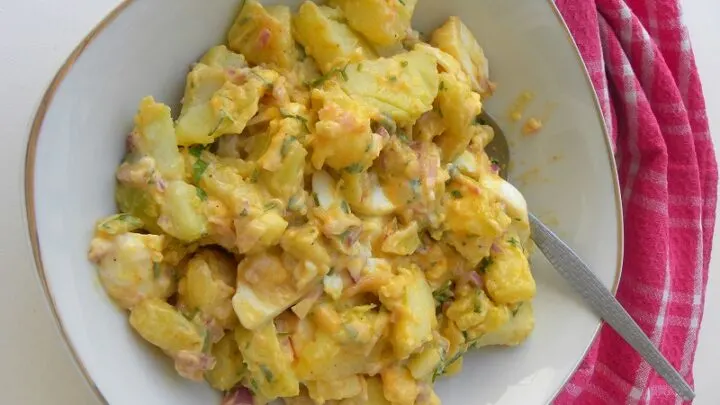
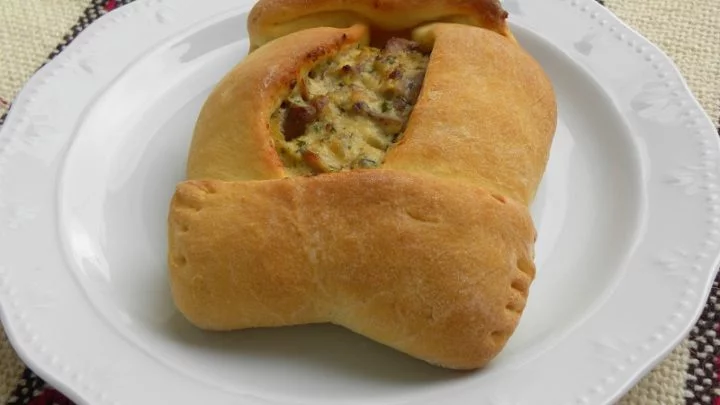
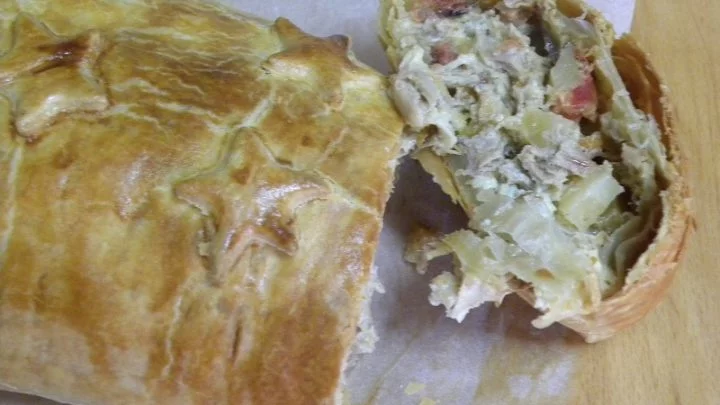
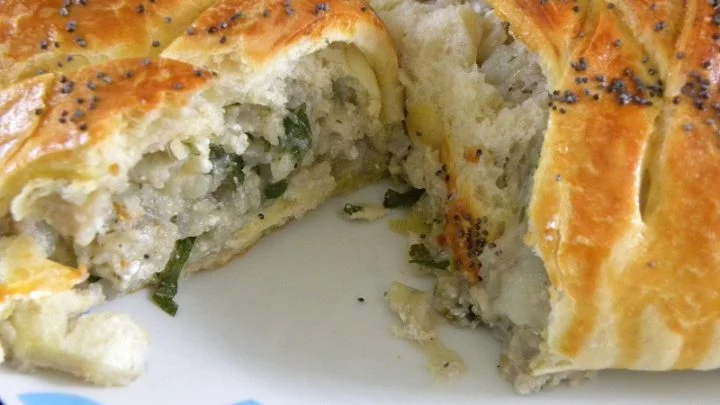
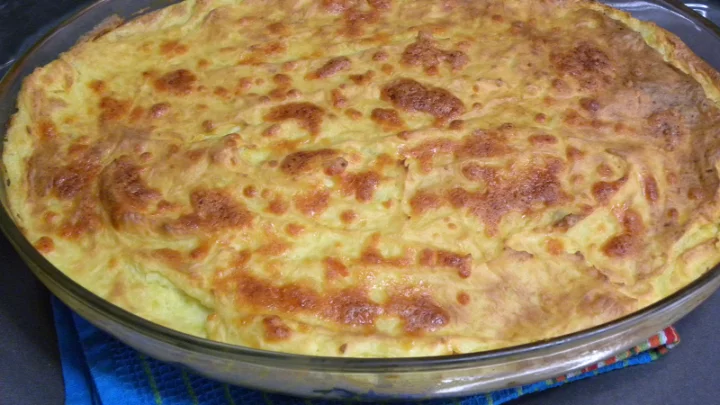
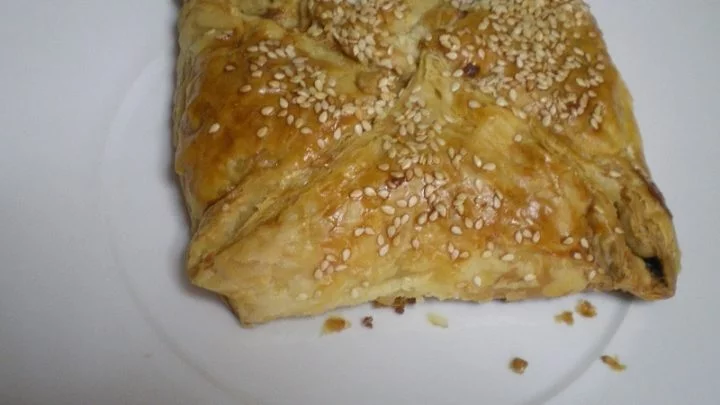
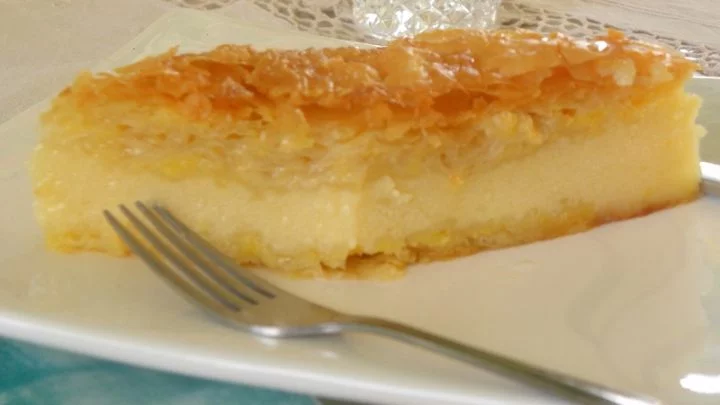
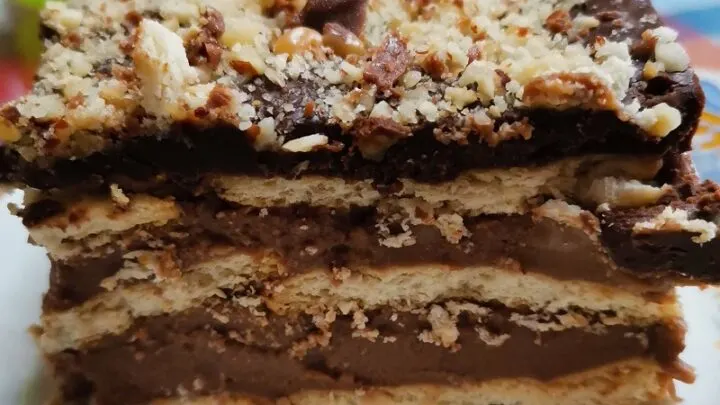
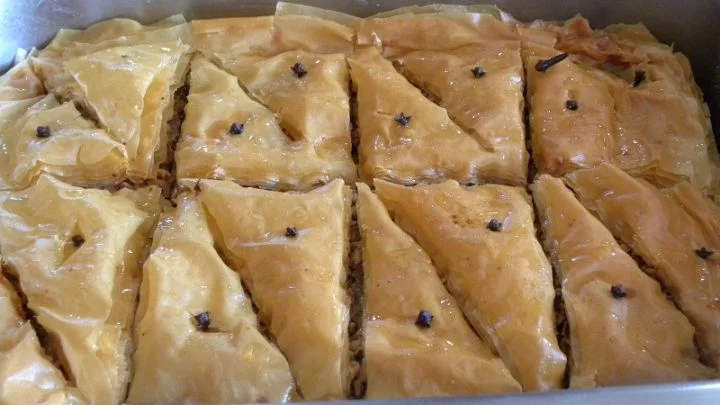
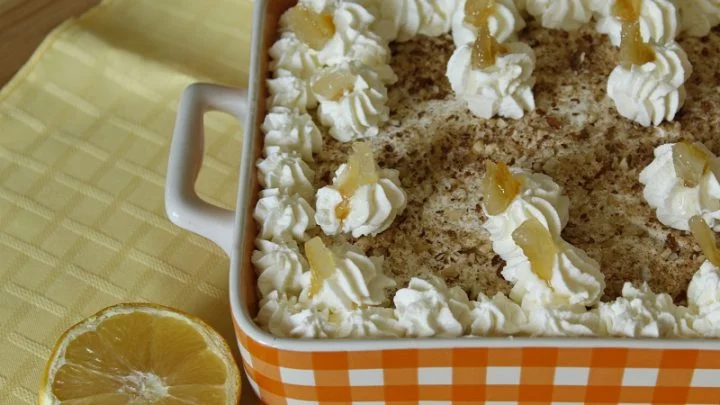
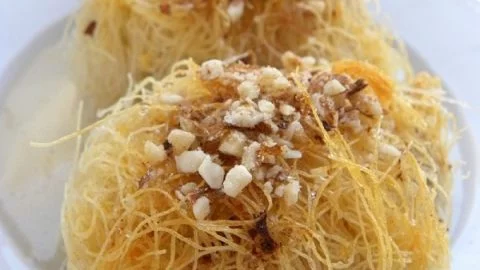
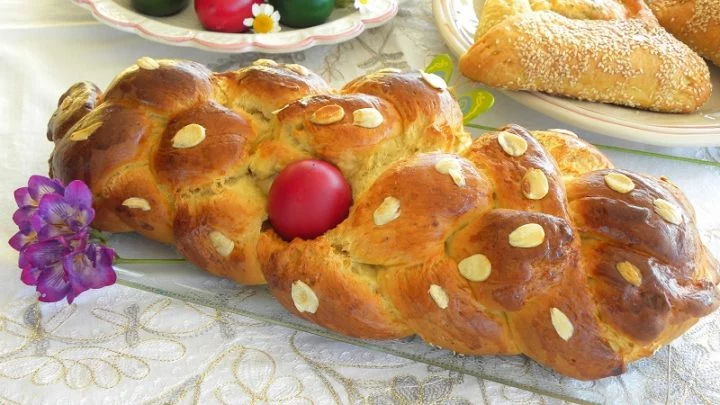
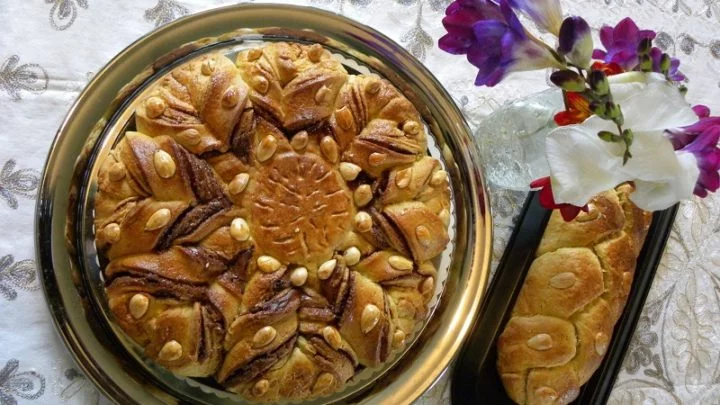
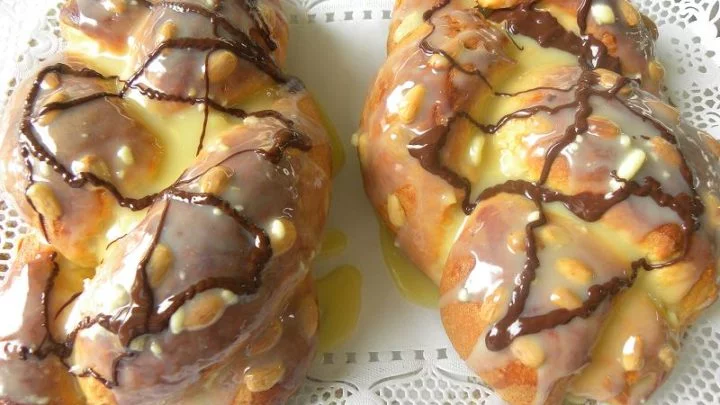
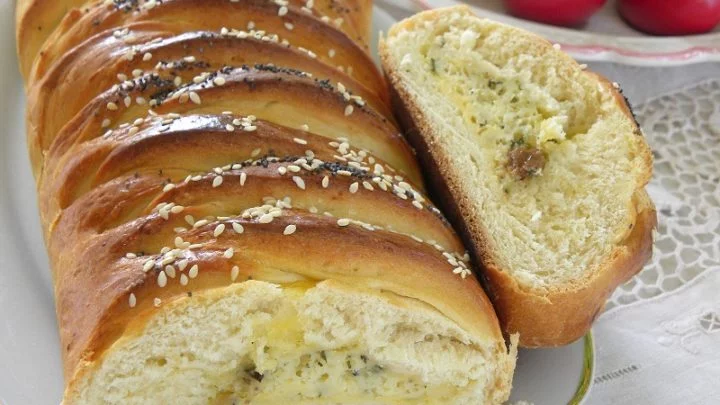
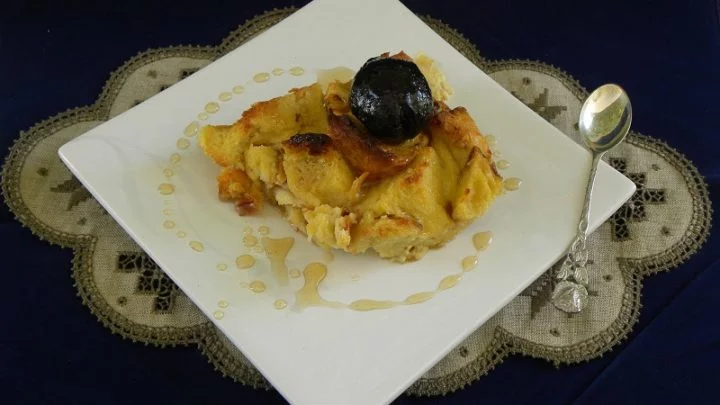
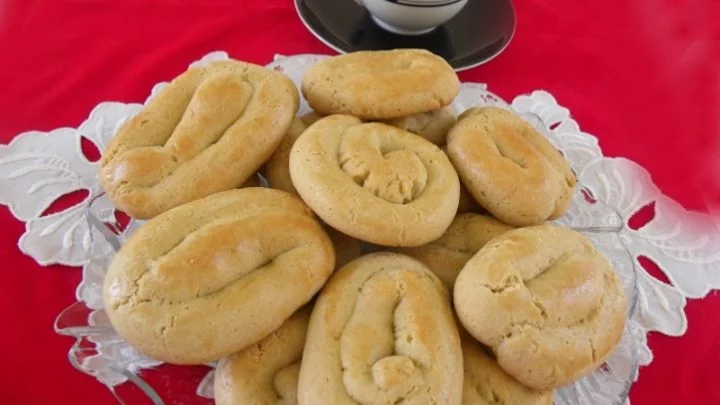
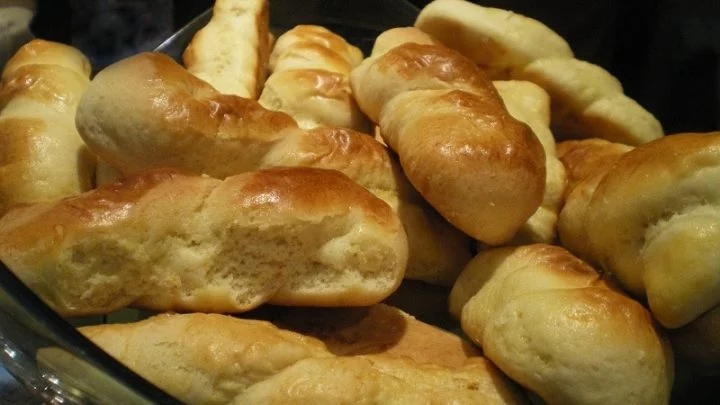

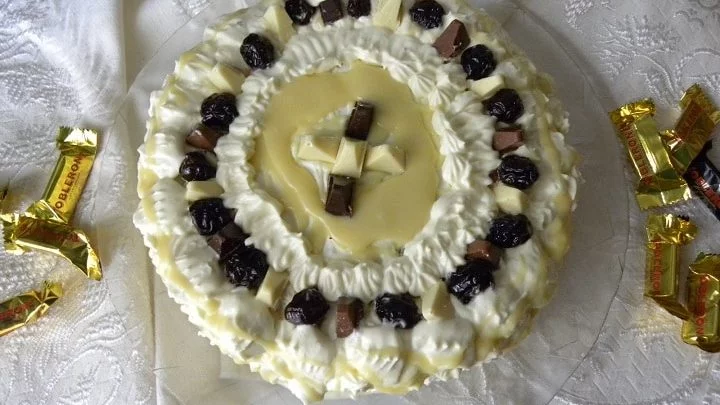
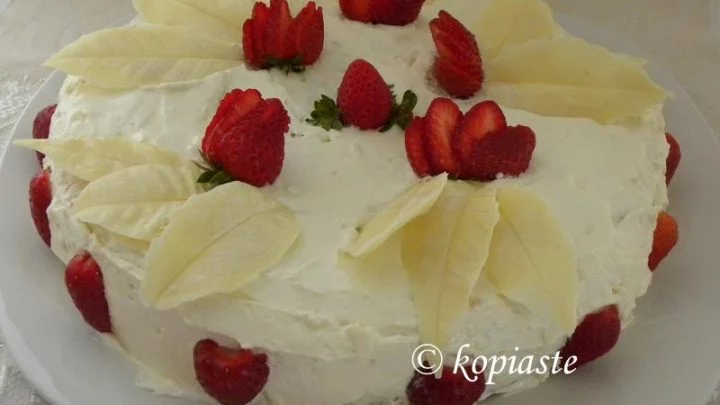
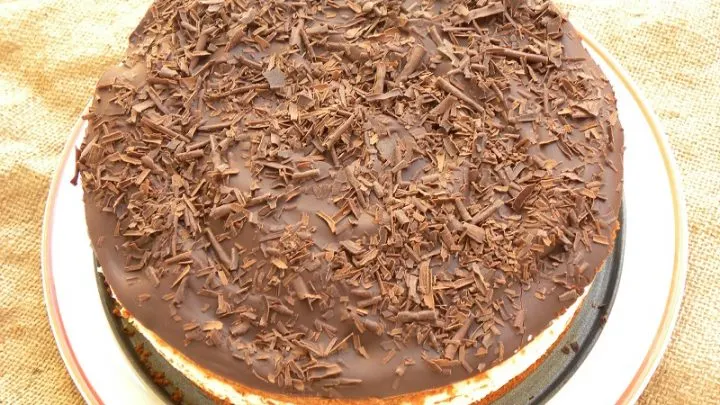
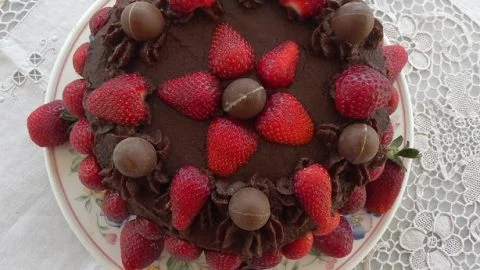

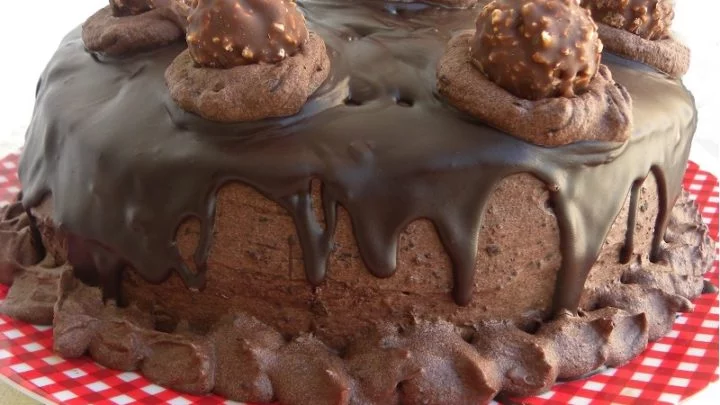
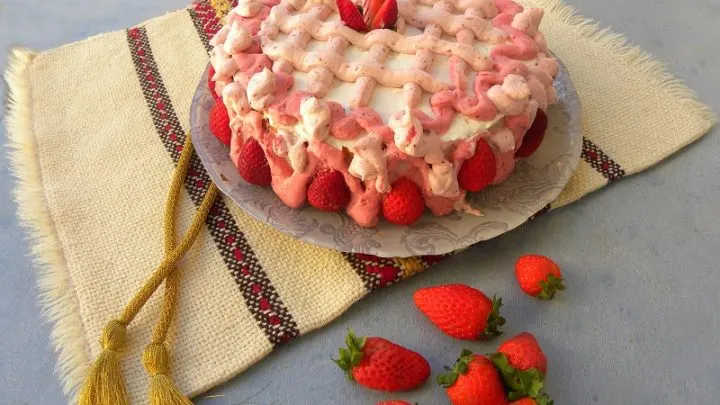
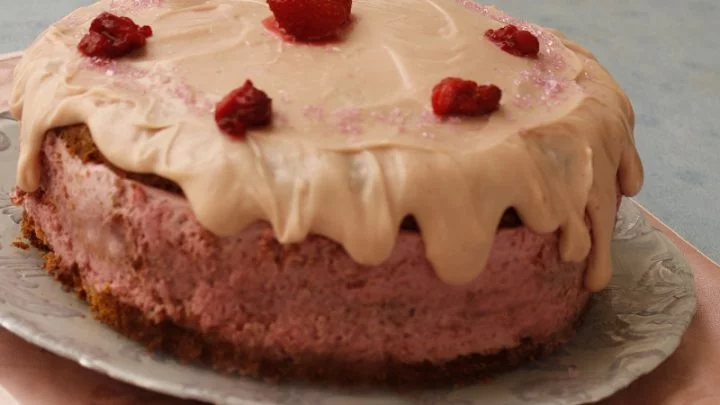
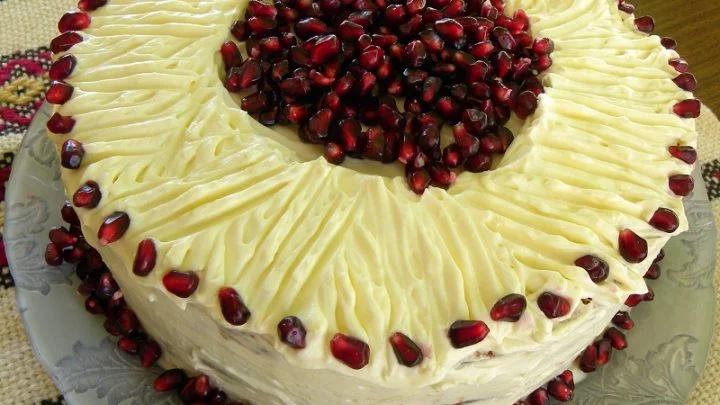
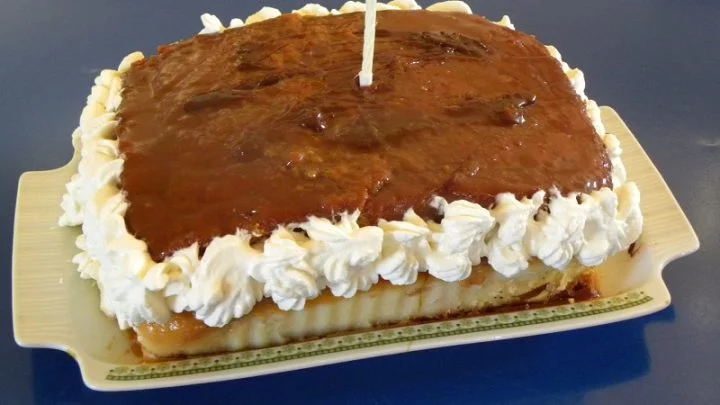
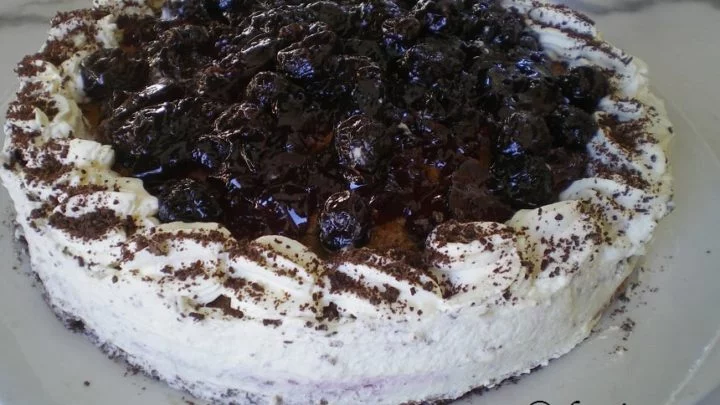

Jamie
Saturday 14th of April 2012
Ivy, your Easter celebration must have been delicious! This lamb looks amazing and I'll bet it was outrageously good! Happy Easter to you and yours! xo
Rosa
Saturday 14th of April 2012
Scrumptious! I'd love to be there... ;-P
Happy Easter and have a lovely time with your family.
Cheers,
Rosa
Joan Nova
Saturday 7th of April 2012
I know that tastes wonderful!! Happy Easter to you and your family.
Elly
Tuesday 29th of April 2008
Mmm, the best! I hope you had a nice Easter, Ivy. Christos Anesti!
Ivy
Friday 25th of April 2008
Thank you Laurie for your wishes.
Lulu, Kokoretsi will be posted tonight.
Rosie, shall try and fix the photo, thanks.
Val, I too hope that we may eat roasted lamb together one day.